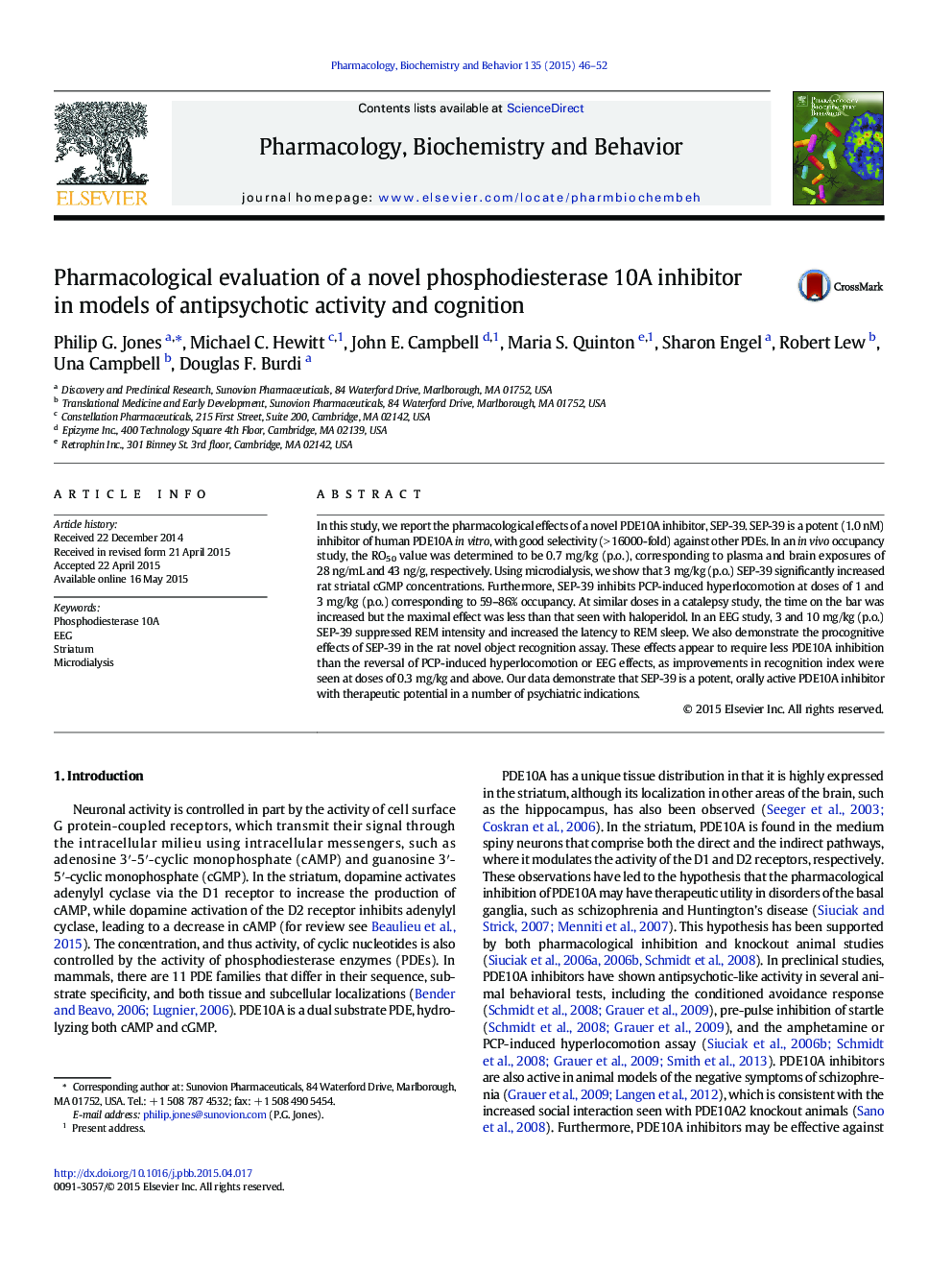| Article ID | Journal | Published Year | Pages | File Type |
|---|---|---|---|---|
| 8350445 | Pharmacology Biochemistry and Behavior | 2015 | 7 Pages |
Abstract
In this study, we report the pharmacological effects of a novel PDE10A inhibitor, SEP-39. SEP-39 is a potent (1.0Â nM) inhibitor of human PDE10A in vitro, with good selectivity (>Â 16000-fold) against other PDEs. In an in vivo occupancy study, the RO50 value was determined to be 0.7Â mg/kg (p.o.), corresponding to plasma and brain exposures of 28Â ng/mL and 43Â ng/g, respectively. Using microdialysis, we show that 3Â mg/kg (p.o.) SEP-39 significantly increased rat striatal cGMP concentrations. Furthermore, SEP-39 inhibits PCP-induced hyperlocomotion at doses of 1 and 3Â mg/kg (p.o.) corresponding to 59-86% occupancy. At similar doses in a catalepsy study, the time on the bar was increased but the maximal effect was less than that seen with haloperidol. In an EEG study, 3 and 10Â mg/kg (p.o.) SEP-39 suppressed REM intensity and increased the latency to REM sleep. We also demonstrate the procognitive effects of SEP-39 in the rat novel object recognition assay. These effects appear to require less PDE10A inhibition than the reversal of PCP-induced hyperlocomotion or EEG effects, as improvements in recognition index were seen at doses of 0.3Â mg/kg and above. Our data demonstrate that SEP-39 is a potent, orally active PDE10A inhibitor with therapeutic potential in a number of psychiatric indications.
Related Topics
Life Sciences
Biochemistry, Genetics and Molecular Biology
Biochemistry
Authors
Philip G. Jones, Michael C. Hewitt, John E. Campbell, Maria S. Quinton, Sharon Engel, Robert Lew, Una Campbell, Douglas F. Burdi,
